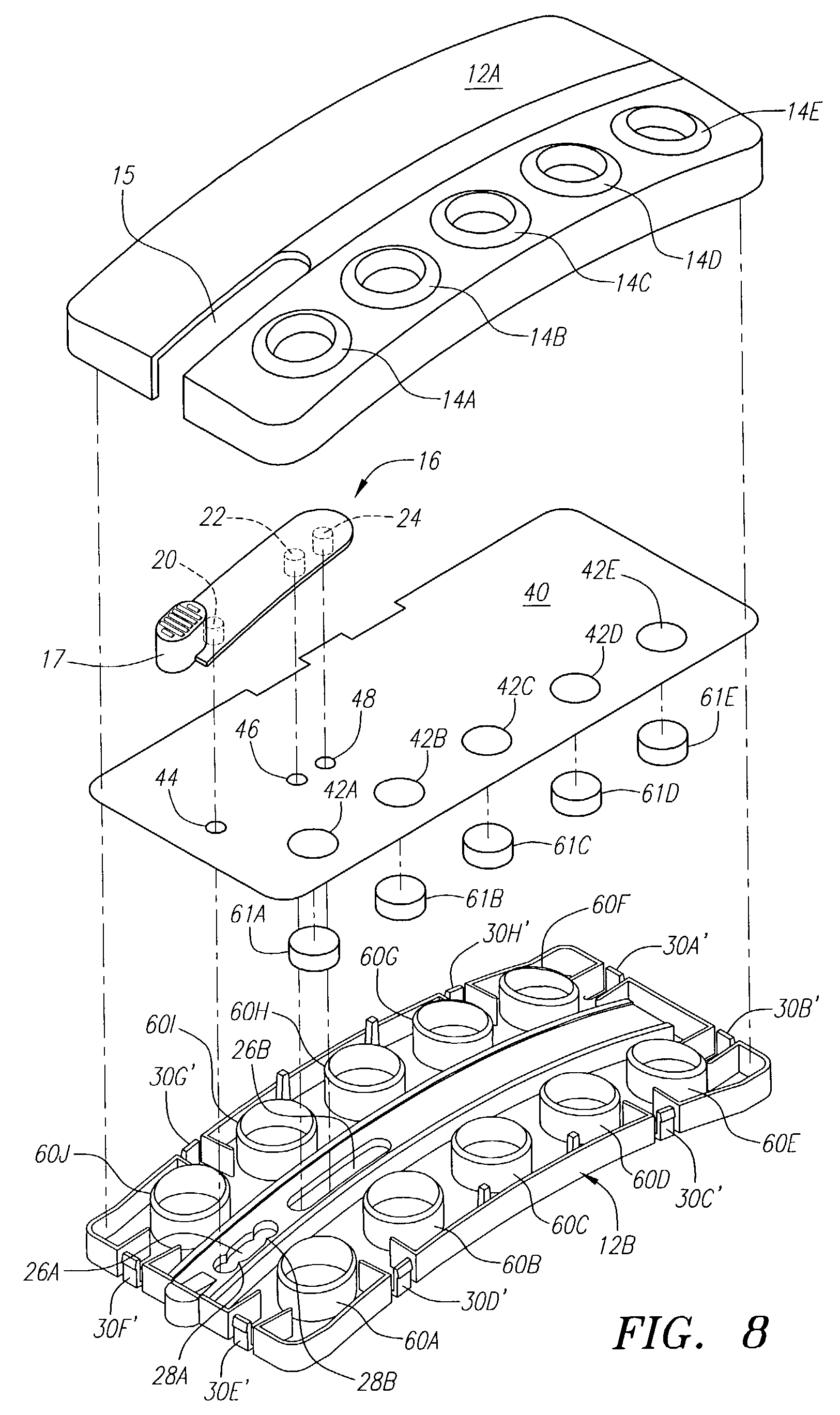Methods and devices for the detection of pathogenic microorganisms and their antimicrobial susceptibility
a technology of pathogenic microorganisms and antimicrobial susceptibility, which is applied in the field of pathogenic microorganisms and their antimicrobial susceptibility detection, can solve the problems of compromising the quality of patient care, time-consuming and labor-intensive procedures to obtain antibiotic susceptibility data, and achieves the effect of facilitating the growth of pathogens, effective treatment of infections, and high degree of confiden
- Summary
- Abstract
- Description
- Claims
- Application Information
AI Technical Summary
Benefits of technology
Problems solved by technology
Method used
Image
Examples
example 1
[0058]The following example illustrates one embodiment of the device of the present invention. The person of ordinary skill in the art will realize that other variations and embodiments of the device described may also be useful. Turning to the Figures, device 10 includes a housing 12 having upper and lower housing portions 12A and 12B, respectively. Housing 12 is preferably fabricated from a material that is light and easily manufacturable, such as plastic or another mold-injectable substance, e.g., polystyrene. Upper housing 12A has well openings 14A-14E and slot 15 for movement of slidable tab 16 relative to the housing. While five well openings (or “compartments”) are shown, a fewer or greater number of openings can be provided, such as for different reagents or for positive and negative controls (discussed, below). Lower housing 12B has wells 60A-60J, wherein wells 60A-60E correspond to well openings 14A-14E in upper housing 12A. Lower housing 12B also includes locking tabs 30A...
example 2
[0065]In this example a further embodiment of the present invention is disclosed that includes a kit for performing the one or more assays. The kit can include any combination of the following items: an assay device of the present invention; an outer box; a sealed, foil pouch enclosing each device 10 or 100; and optionally, a desiccant within each pouch; a sample diluent bottle; pipette(s) (preferably two per device, one for facilitating transfer of the sample to the diluent bottle (this pipette can be enclosed with the device in the foil pouch) and one for facilitating transfer of sample / diluent to the device); sealable plastic bag(s) for enclosing and incubating the device after application of sample / diluent; and instructions for use of the kit / device. Any or all of these items may be provided in a package (e.g., a box, pouch, envelope, or other suitable package or enclosure) as a kit.
[0066]Exemplary instructions for using device 10 or 100, and kits containing such devices and ins...
PUM
| Property | Measurement | Unit |
|---|---|---|
| thickness | aaaaa | aaaaa |
| diameter | aaaaa | aaaaa |
| fluorescent | aaaaa | aaaaa |
Abstract
Description
Claims
Application Information
 Login to View More
Login to View More - R&D
- Intellectual Property
- Life Sciences
- Materials
- Tech Scout
- Unparalleled Data Quality
- Higher Quality Content
- 60% Fewer Hallucinations
Browse by: Latest US Patents, China's latest patents, Technical Efficacy Thesaurus, Application Domain, Technology Topic, Popular Technical Reports.
© 2025 PatSnap. All rights reserved.Legal|Privacy policy|Modern Slavery Act Transparency Statement|Sitemap|About US| Contact US: help@patsnap.com



